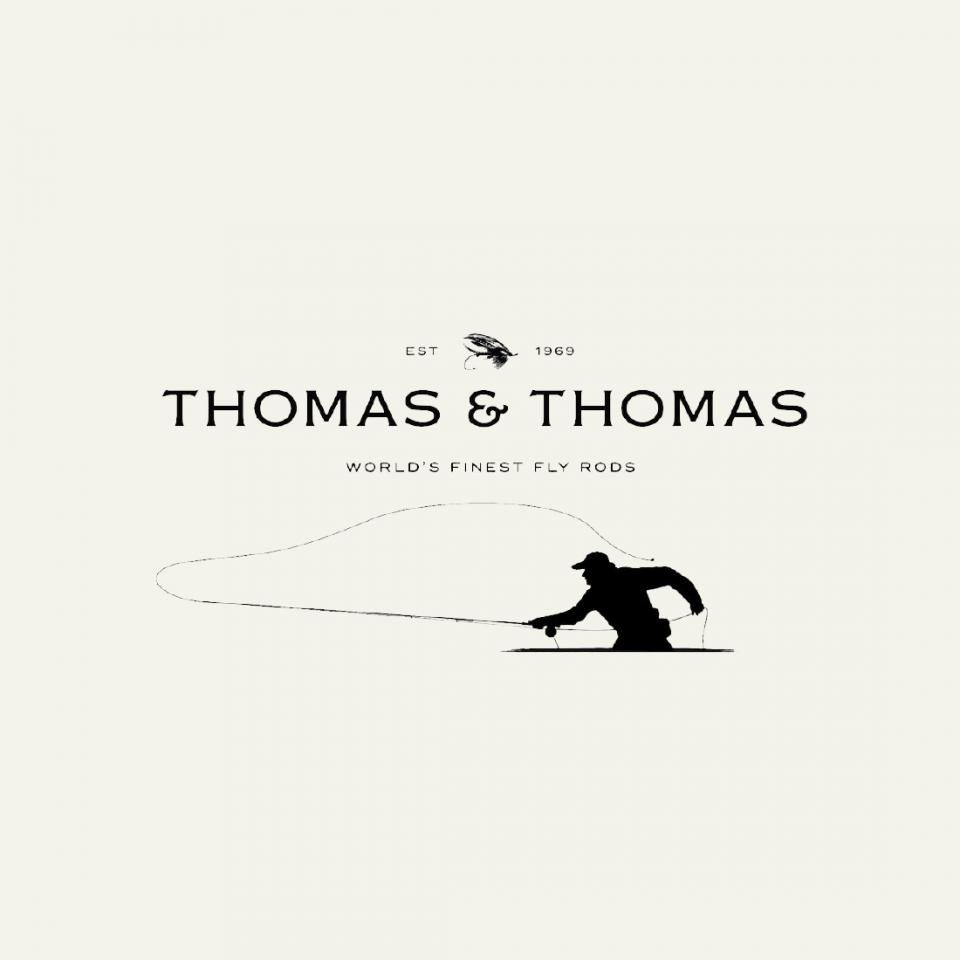Demystifying The Spey
Part ONE
So you’ve seen the videos of mighty men on great rivers throwing 50 plus yards of line with what seems like magical ease and you want some of that for yourself. Thinking of all those places on New Zealand rivers you could reach if only you could solve the conundrum of the Speycast, its variations and a few that you’ll invent yourself.
Assuming, that is, that you can make a start, and like so many things that we want to learn in our time here, that is the hardest part.
The initial problem, particularly in New Zealand where fishing with a double hander is in its infancy, is finding the right equipment. You head for your favorite outfitter where you’ve gawped at the double hander in the rack on previous visits. This time though your serious. No doubt it will not come cheap but you will not allow that to stand in your way, instructing your salesman to show you the rod in more detail and generally tell you all you need to know in one clear concise sentence in a language as close to English as possible.
What usually comes out at this stage is, in my experience, utter twaddle. An endless and confusing monologue designed to both confuse and affirm all that you have thought up to that point. Rather like a horoscope in the back of some cheap and nasty magazine, usually written by someone called Myrtle the mysterious or suchlike. Politicians are rather good at this sort of thing also (we won’t mention any names).
Once the desire to fall asleep on the shop floor has past you realize that you need to know a lot more before spending all that cash that could otherwise go on ale/lager/whiskey/petrol or mending the truck that you wrecked out on the serengetti of the Rakaia braids last weekend.
In truth its not the salesman’ fault. He can’t speycast! Our argument is usually “if you can’t advise then please don’t try!”
Almost never in the world of fly fishing do we get a real chance to try out the vast array of tackle available and this results in years of buying the wrong lines/rods etc let alone all the wasted money.
So how do we deal with this?
As with most art forms, which Speycasting certainly appears to be, understanding, patience and real rivercraft will tell you all you need.
Lets deal with some understanding, based quite simply on our understanding of 36 years fishing the Spey, Tweed, Dee and many other rivers throughout the globe….
Speycasting is almost NEVER a joy on rods over 9 weight, regardless of rod length or length of line belly.
If you can’t do it on a 9 weight or under grab a spinning rod! Much like single handed fly fishing there comes a point where its just not fun anymore. A single handed rod over a 7 weight is generally for flinging heavy flies out into deep water.
Those who fish rivers such as the Tongariro will be familiar with these tactics and will also have been victims of wrist and forearm damage caused by using tackle such as 8/9 weight rods, huge strike indicator, glo bug and a bomb for days on end.
Yes it may catch fish but its far removed from casting naturals on the home waters of our youth and in truth, that is where our hearts lie.
This is precisely where the double handed rod comes in. It will allow us to cast big heavy gear, beautifully and with finesse. For weeks on end.
You can use tippets far in excess of those used on a single hander and fish areas previously far beyond your reach. Most of this can be achieved with little or no wading and no false casting.
These things transform the way in which we fish. On small waters the single handed rod rules but every- where else the double hander will give you the edge every time.
It is worth noting that once learnt, speycasting is just as easy and effective on single handed rods which really will open up those tricky spots you’ve been losing flies to all these years.In recent years the manufacturers have been desperately searching for ways to remarket double handed rods. Hence the switch, scandi, zpey, skagit rods etc.
Make no mistake about it, they are all just spey rods.
Are these guys really suggesting that we can use an 11’6 8 weight double handed switch rod with one hand?
Yes they are and we can assure you that any elbow problems you had on the Tongariro with your 8 wt will pale into insignificance once trying to adopt the manufacturers claims.
DO NOT use a double handed rod with one hand for any protracted period of time, end of !
SWITCH rods are generally under 12 foot, 8 weights on down to 5/6 weight. SCANDI rods claim to be made for more for the underhand cast, which is frankly just another silly name for a speycast variant.
SKAGIT rods are generally stiffer and far less responsive due to massive overloading of the skagit style. Shooting heads renamed skagit !
Skagit is really the only other form that has developed its own lines and tech significantly.
As said they are simply overweight shooting heads with the head emphasis firmly at the end of the line. Developed in the American north west/ great lakes fisheries. These floating lines pull heavy flies up from the deep in almost a single throw.
Its not pretty and it will not make you a competent Speycaster but it has won its place in the double handers world.
Why won’t skagit make you a great speycaster?
All weight forward lines are designed to pull hard and fast until the belly runs out, at which point they become impossible to re cast unless the belly is back inside the top ring of the rod. They achieve a high line speed which can be good for the learner in wind but present very badly because of this line speed. You can make the bellies longer but then they become too heavy to lift because of their bulk.
Simply put they give you a false impression of how good you are! Distance is everything to many people learning to cast and this is why they choose weight forward lines that really were designed for the rainbow stew pond fisheries that boomed in the UK from the 1980’s.
Presentation was never really an issue, one just threw it out as far as possible and stripped the fly back until one of the 10,000 witless fish grabbed out of boredom, stupidity, aggression or the simple fact that they had no idea what to feed on seeing as they had been tipped into the lake at 5am that morning prior to the lake opening! All they knew was pellets.
The double taper and flat beam lines however had no belly so could still be recast at any point along their length. They had superb presentation with nice open loops controllable to tight wedges and once one had learnt how to cast properly, could cast far in excess of the weight forward lines because their weight only ever increased with length. This produced infinitely better all round casters. Now a spey line is a weight forward line, no doubt but I have bellies up to 125 foot! That’s as much as we can ever pick up at one time so in effect we use it in the same way we do a double taper, all be it with some additional head profile.
A skagit line is short, with all the weight right at the front in order to pull that heavy fly out, then running line.
Skagit lines are designed for one thing and one thing alone. Spey lines will do everything.
There are even fast sinking spey lines that are designed to make the novice want to commit suicide within ten casts.
Avoid these at first, please.
If we learn to speycast first then we will automatically master of all these other styles however ridiculously they reinvent the names and try to confuse us into wasting money.
Its the very same as learning on the double tapers designed for the single-handed rods, if you can do that you can do anything!
So what gear do you need?
In these articles we will highlight the equipment we value ourselves. Either because of versatility, value or quality.
Lets use some of our rigs as an example...
ROD: THOMAS & THOMAS DH 14”09 wt 3 piece.
REEL: HARDY BOUGLE lightweight 4 inch.
LINE: CARRON Jetstream 95 foot belly floating line.
This is a medium to large rig and the matching of the Thomas & Thomas to the Carron is a thing to behold.
The reel is frankly irrelevant other than the fact that it is not large arbor. Avoid large arbor reels with double handers, it will only restrict the amount of backing you can use.
ROD: SHAKESPEARE Oracle IV 12”08 wt 4 piece.
REEL: HARDY BOUGLE lightweight 3 inch.
LINE: CARRON Jetstream floating 65 foot belly line.
This rig is a great all rounder. It will fish the small stuff well but can also cover a good bit of water when needed.
It will handle sink tips, to a point and will still cast any tippet length required.
It’s also worth noting that whilst the Thomas & Thomas is several thousand dollars the Shakepeare is a couple of hundred.
Your dealer won’t tell you about that, will he?
Once again the Carron is sublime and the 65 foot head will fit on almost any other double handed rod.
Shakespeare make a slightly confusing though comprehensive range of double handers including a new scandi which is beautifully soft. All are great for learning, all the way to advanced. We value out Shakespeare’s just as much as our Thomas rods.
ROD: VISION Switch 11”6’ 7/8 wt.
REEL: HARDY BOUGLE lightweight 3 inch.
LINE: CARRON Jetstream floating 65 foot belly line.
This rod is a wee toothpick but with a good bit of backbone. It has its limitations, as do all of these rigs but it will surprise you how capable it is.
The fact it has switch written on it is laughable really.
Just a load of old hogswash.
ROD: SCOTT MACKENZIE DTX G2 16” 10wt 4pce
REEL: HARDY BOUGLE lightweight 3 inch.
LINE: CARRON Jetstream floating 65 foot belly line.
This 10 weight is a good example of the exception to my general 9 weight cut off point. Yes it is a large rod but has the most beautiful deep action that loads progressively and punches perfectly with split second recovery. Some longer rods tend to wobble at the punch point putting a downward mend into the casting stroke which just feels wrong. These DTX rods a worth investigating and though not super cheap represent excellent value for what they can do. Scott Mackenzie has been and remains one the great speycasters and has developed these rods himself. Of note is the ATLAS Travel Series of double handers.
There are other rods and lines that we like but this will give you an idea. Anyone wanting advice is welcome to contact us and we would point out that we are in no way a dealer of fly fishing equipment.
Maybe dealers reading this article will start to move in the right direction and get the right gear instead of just stocking the default product of the manufacturers they feature. When a great spey rod can be couple of hundred dollars they need to step up and really get behind their clients if they want to start to sell some gear successfully.
At this time there is nobody in New Zealand retailing any of the products mentioned here! How can this be possible in a country that features so highly in the world of fly fishing?
If retailers do not jump on board then I suppose we will have to look at some way to supply demand ourselves.
In our next article we’ll look further into the different forms of speycasting and how to practice them.
One thing is worth mentioning though. Just like the rods, whatever silly cast names you hear - Snap-T, Inverted Snake Roll etc etc they all end up in the same position prior to the casting stroke.
All that flanneling around is either to deal with wind or simply to show off! The single spey cast, as with the spey rod and line will teach you all you need to know to reach that big hungry fish 55 yards away.
At Stravon we teach all forms of casting the fly, from beginner to advanced. Our team will always have a spread of equipment as we move through the country. If you see us, talk to us about your needs and we’ll put you on the right track.
If we have time we’ll even put a few different rigs in your hands so you can try. Anyone requiring personal instruction should contact the estate office.
Until then, may the waters keep you.



